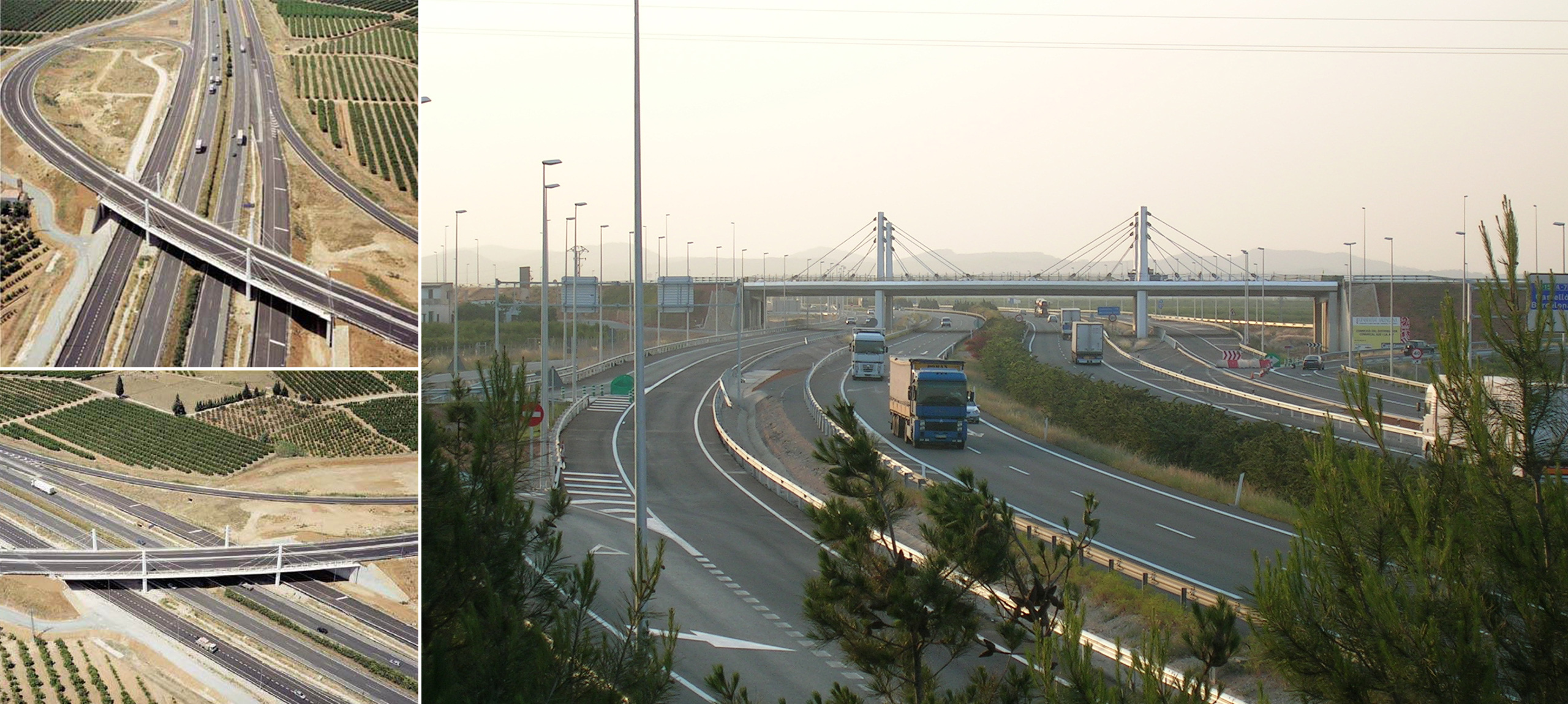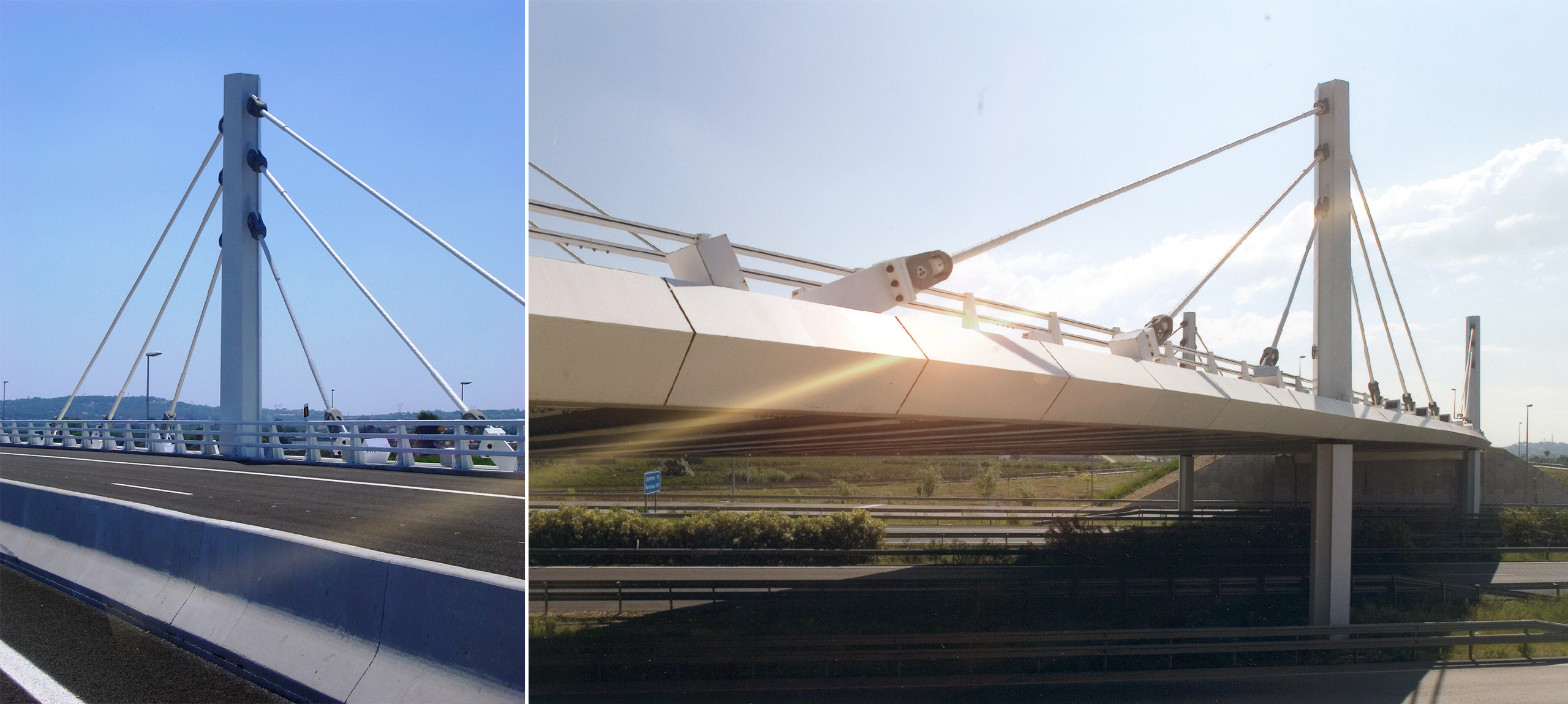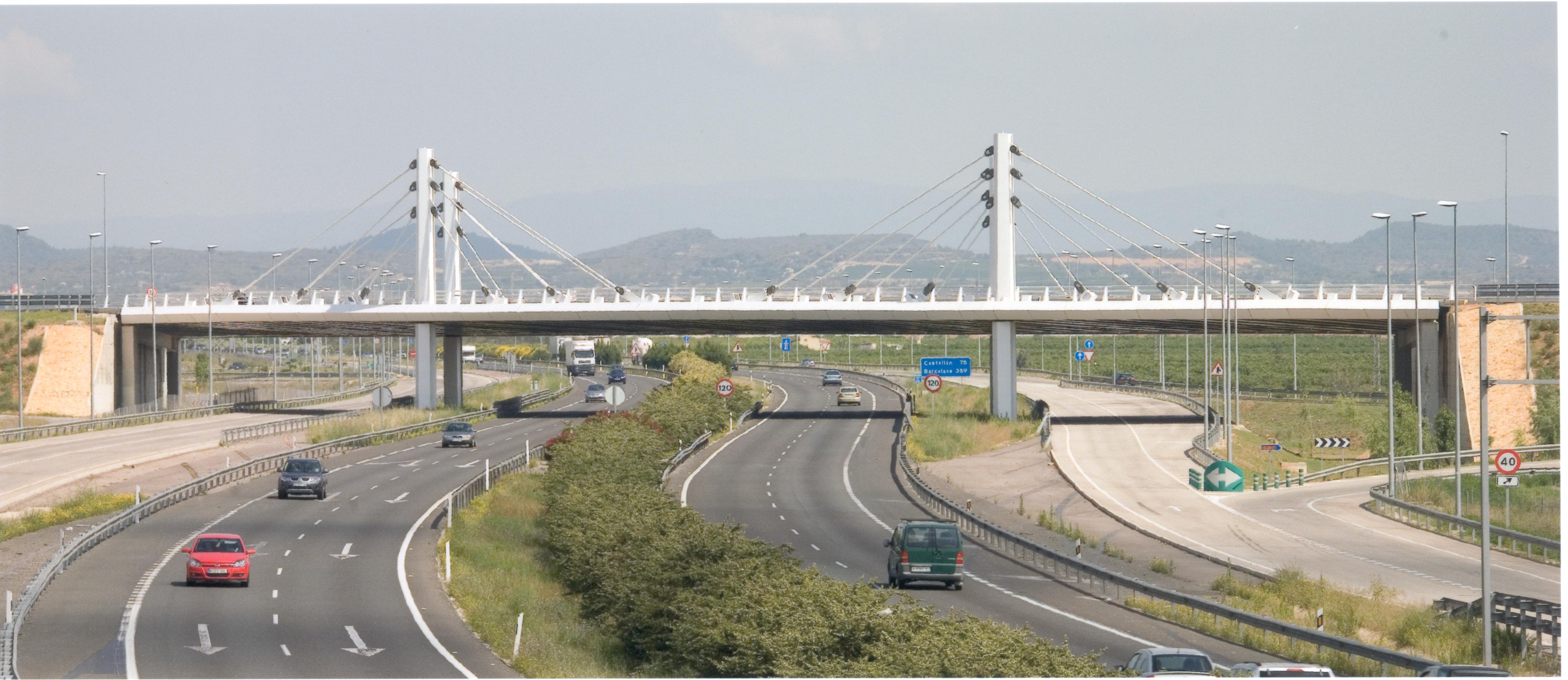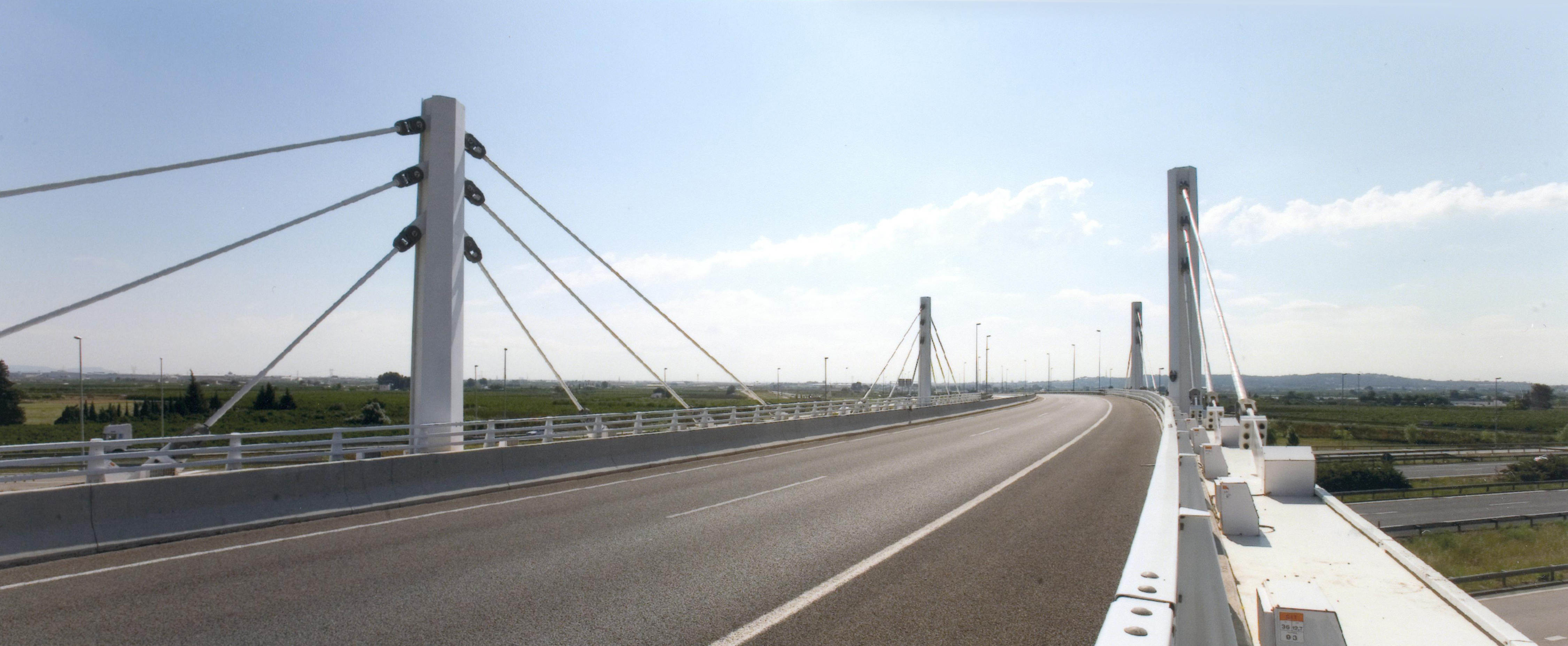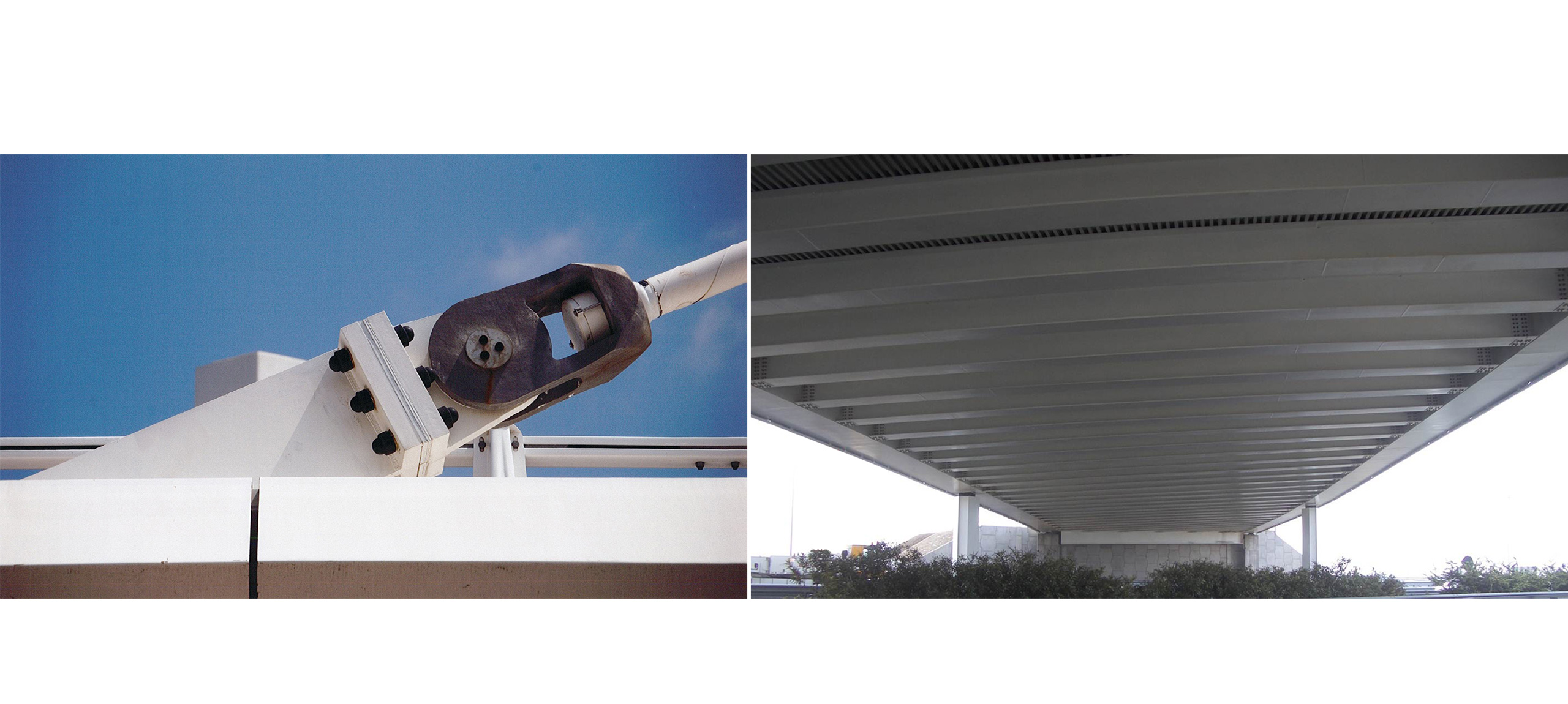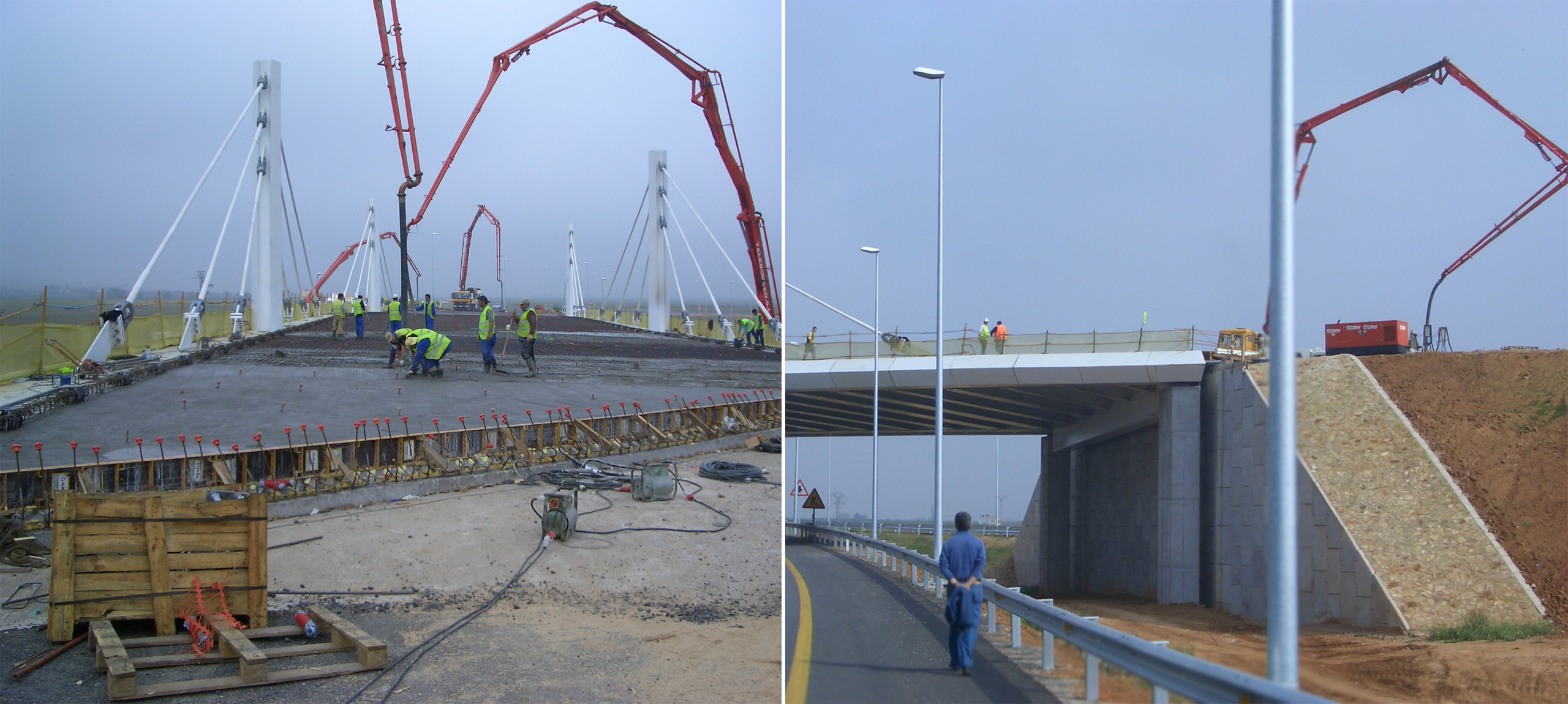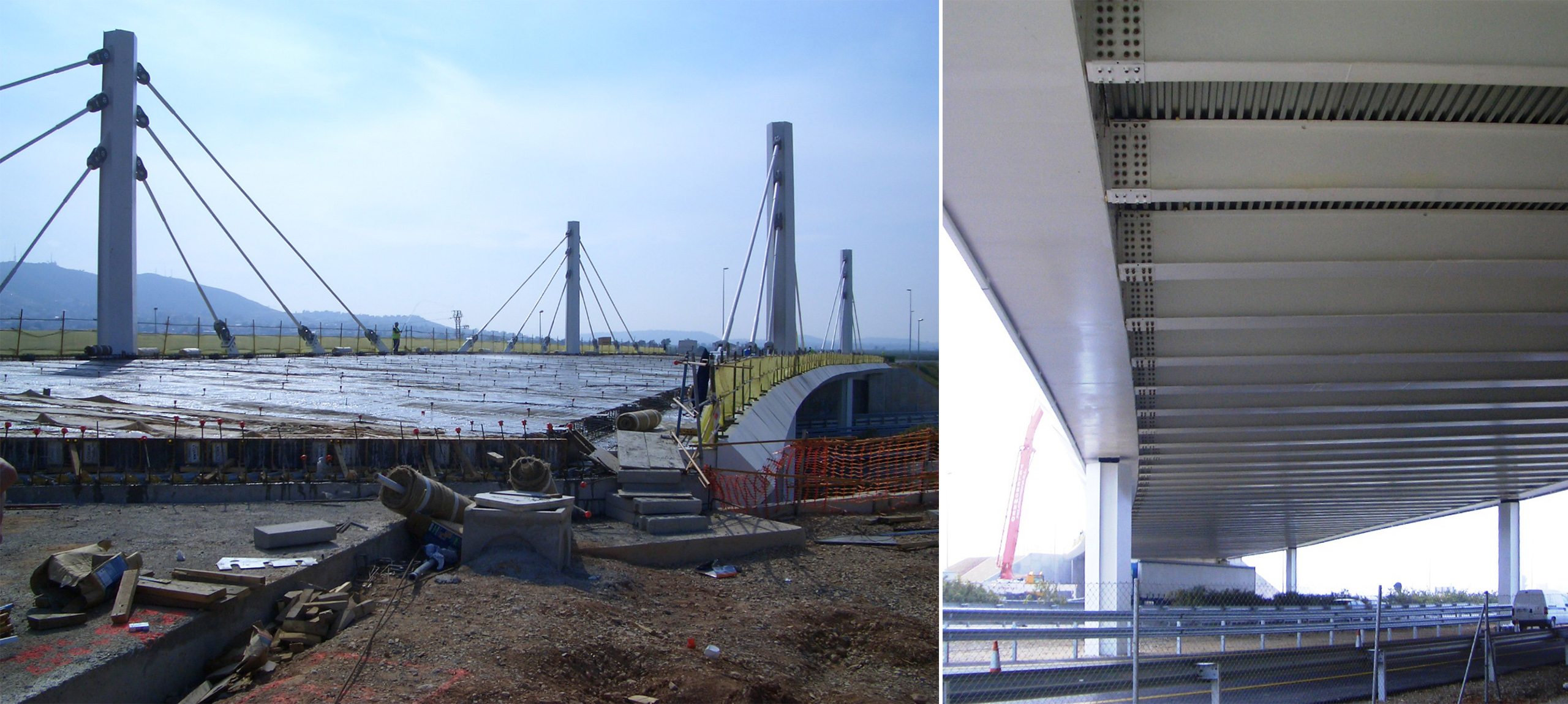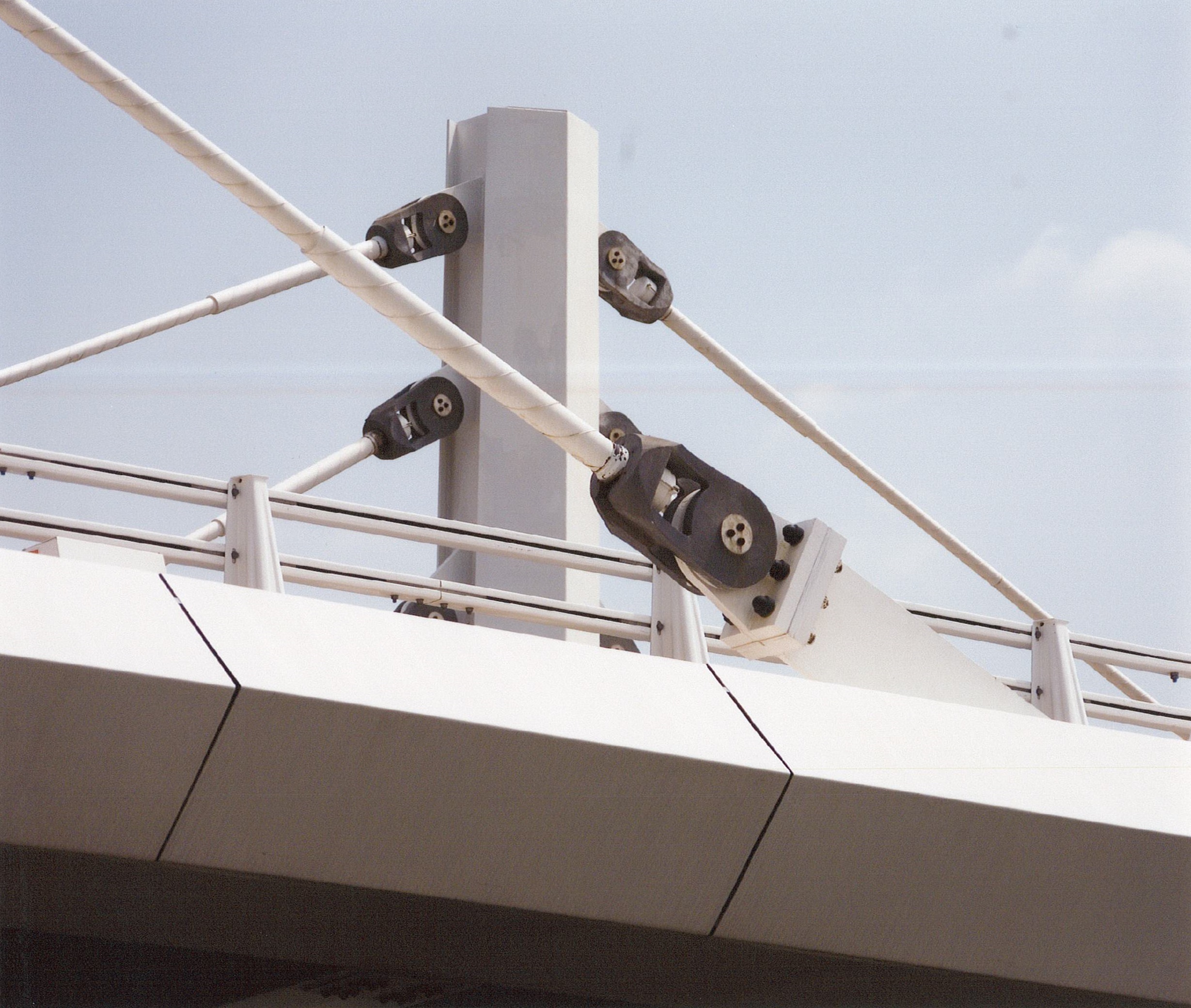
| Cable Stayed Bridge over Valencia By-Pass | |
| Torrente, España | |
| Structural typology | Cable Stay Bridges |
| Date | Juni, 2005 |
| Umfang | Detailed design and construction support |
| Construction | ute fcc-pavasal |
| Owner | Generalitat Valenciana |
The new link motorway between the southern Valencian distributor and the A-7 motorway which by-passes Valencia, shall need to cross the latter and its service roads set at a 45º skew and without need of supports on the central reservation of the A-7 so allowing for possible future widening of the aforementioned. The connection at the junction area shall have two carriageways, one 7.0m wide and the other 4.0m, two 2.5m hard shoulders and a 3.0m wide central reservation.
The proposed structure consists of three spans 34.5m + 57.0m + 34.5m, set on two 1.8m wide X 1.0m deep longitudinal steel box girders which are held together by two planes of cables; 3 front-stay cables and three back-stay cables which are set in anchor blocks.
The cables in the stay system have a diameter varying between 225mmm and 245mm. They are composed of parallel cables and are of a pre-established length finishing in anchorages.
Transversally, the 23.0m wide deck is composed of a framework of bi-articulated, reinforced, 0.8m-deep steel-beams upon which corrugated sheeting is placed followed by a 0.2m maximum depth concrete slab. At the extremes of the slab, due to the skew, a 2.05m deep closing beam is placed, which collects the transversal beams in the area close to the acute angle of the deck.
The proposed structure consists of three spans 34.5m + 57.0m + 34.5m, set on two 1.8m wide X 1.0m deep longitudinal steel box girders which are held together by two planes of cables; 3 front-stay cables and three back-stay cables which are set in anchor blocks.
The cables in the stay system have a diameter varying between 225mmm and 245mm. They are composed of parallel cables and are of a pre-established length finishing in anchorages.
Transversally, the 23.0m wide deck is composed of a framework of bi-articulated, reinforced, 0.8m-deep steel-beams upon which corrugated sheeting is placed followed by a 0.2m maximum depth concrete slab. At the extremes of the slab, due to the skew, a 2.05m deep closing beam is placed, which collects the transversal beams in the area close to the acute angle of the deck.


